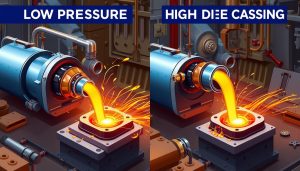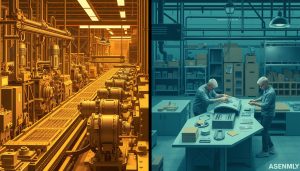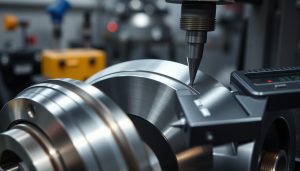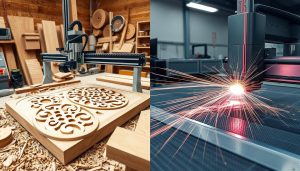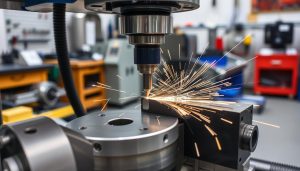When it comes to manufacturing processes, the choice between welding and riveting often boils down to cost considerations. While both techniques have their advantages, the financial implications can play a crucial role in determining the most suitable approach for a given project. In this article, we’ll delve into a comparative analysis of the costs associated with welding and riveting, exploring the factors that influence these expenses and the scenarios where one method may be more cost-effective than the other.
Cost Comparison Between Welding and Riveting
When it comes to fabrication and construction, the choice between welding and riveting often boils down to a matter of cost. Both techniques have their unique advantages and drawbacks, but understanding the specific material expenses and labor costs associated with each can help you make an informed decision for your project.
Material Costs: Which Process Is More Affordable?
The material expenses for welding and riveting can vary significantly depending on the type of materials used. In general, welding tends to be more cost-effective for joining thicker, heavier-gauge materials, as it requires less material overall. Riveting, on the other hand, may be more affordable for thinner, lighter-gauge materials, as the fasteners themselves can be less expensive than the welding consumables.
Labor Costs: A Key Factor in Cost Differences
The labor costs associated with welding and riveting can also play a crucial role in the overall project budget. Welding generally requires skilled, experienced technicians, which can translate to higher hourly rates. Riveting, however, can often be performed by less-specialized workers, potentially resulting in lower labor costs. Additionally, the time required to complete a project can impact the labor expenses, with riveting generally being a faster process compared to welding in certain applications.
| Cost Factor | Welding | Riveting |
|---|---|---|
| Material Expenses | Higher for thinner materials, lower for thicker materials | Lower for thinner materials, higher for thicker materials |
| Labor Costs | Higher due to skilled technicians | Lower due to less specialized workers |
| Project Duration | Generally longer | Generally faster |
Ultimately, the choice between welding and riveting will depend on the specific requirements of your project, including the materials used, the complexity of the joint, and the overall production timeline. By carefully considering these cost factors, you can make an informed decision that aligns with your budget and project goals.
When to Choose Welding Over Riveting
When it comes to fabricating complex and intricate metal structures, welding often emerges as the preferred choice over riveting. The advantages of welding for these types of complex joints are numerous and can make it a more cost-effective solution in certain manufacturing scenarios.
Benefits of Welding for Complex Joints
Welding excels at joining materials in a seamless and durable manner, creating a strong, continuous bond that is ideal for welding advantages complex shapes and structures. Unlike riveting, which can leave visible fasteners and potential points of weakness, welding produces a cohesive, uniform finish that is both aesthetically pleasing and structurally sound.
When Welding Is More Cost-Effective in Production
In high-volume production environments, the cost-effectiveness of welding becomes particularly evident. The automated nature of many welding techniques can streamline the fabrication process, reducing labor costs and increasing efficiency compared to the more manual riveting approach. Additionally, the elimination of separate fasteners in welded joints can lead to material savings, further enhancing the cost-effective welding advantages of this method.

“Welding is often the go-to solution for fabricating complex, high-strength metal structures due to its ability to create seamless, durable joints that are both aesthetically pleasing and structurally sound.”
Advantages of Riveting in Certain Applications
While welding may be the go-to choice for complex joints, riveting offers distinct advantages in specific applications. One of the key benefits of riveting is its cost-effectiveness, particularly for simple parts assembly.
Why Riveting Is Often Cheaper for Simple Parts
Riveting is generally a more budget-friendly option compared to welding when it comes to assembling simple parts. The simple parts assembly process involved in riveting requires less specialized equipment and labor, resulting in lower efficient manufacturing costs. This makes riveting an attractive choice for businesses looking to minimize expenses without sacrificing the riveting benefits of a strong, durable joint.
Speed and Ease of Riveting vs. Welding
- Riveting is a faster and more straightforward process than welding, making it well-suited for high-volume production runs.
- The speed and ease of riveting allows for quicker turnaround times, enabling businesses to meet tight deadlines and respond more efficiently to market demands.
- Additionally, riveting requires less specialized training for workers, further contributing to the overall riveting benefits in terms of cost and efficiency.
| Riveting | Welding |
|---|---|
| Faster assembly process | Slower and more complex |
| Lower skill requirements for workers | Requires specialized training and expertise |
| More cost-effective for simple parts | Better suited for complex joints and structures |
By understanding the advantages of riveting, businesses can make informed decisions on the most appropriate joining method for their specific needs and applications, ultimately optimizing their simple parts assembly and efficient manufacturing processes.

Other Considerations in Cost Analysis
When comparing the costs of welding and riveting, it’s important to consider not just the material and labor expenses, but also the equipment and setup costs, as well as the long-term implications of each process. These additional factors can have a significant impact on the overall cost-effectiveness of your manufacturing operations.
Equipment and Setup Costs for Both Processes
The initial investment required for welding equipment, such as power sources, electrodes, and shielding gases, can be higher than the setup costs for riveting. However, the long-term durability and reliability of welding equipment may offset these upfront expenses. Riveting, on the other hand, often requires less specialized machinery, resulting in lower equipment and setup costs.
Long-Term Cost Implications
When evaluating the overall cost-effectiveness of welding and riveting, it’s crucial to consider the long-term implications of each process. Welding may require more maintenance and repairs over time, but it can also lead to stronger, more durable joints that are less prone to failure, potentially reducing the need for costly rework or replacements. Riveting, while often less expensive upfront, may require more frequent part replacements and inspections to ensure the integrity of the joints.
| Cost Factor | Welding | Riveting |
|---|---|---|
| Equipment Costs | Higher initial investment | Lower initial investment |
| Setup Expenses | More specialized equipment required | Less specialized equipment needed |
| Long-Term Manufacturing Costs | Higher maintenance and repair costs, but potentially longer-lasting joints | Lower maintenance costs, but more frequent part replacements and inspections |
By carefully considering these additional cost factors, manufacturers can make an informed decision on whether welding or riveting is the more cost-effective solution for their specific needs and applications.
Shixinproto’s Welding and Riveting Services
At Shixinproto, we are proud to offer a comprehensive suite of professional welding services and expert riveting solutions to meet the diverse needs of our manufacturing partners. Whether you require intricate welding for complex joint designs or efficient riveting for simpler components, our highly skilled team has the expertise to deliver cost-effective and reliable results.
As a trusted manufacturing partner, we understand the importance of choosing the right joining method for your specific project. Our knowledgeable specialists will work closely with you to assess your requirements, analyze the cost implications, and recommend the most suitable approach – be it welding or riveting – to ensure the optimum balance of quality, performance, and affordability.
With state-of-the-art equipment, rigorous quality control, and a commitment to continuous improvement, Shixinproto is your go-to source for all your welding and riveting needs. Benefit from our unwavering dedication to delivering exceptional results and seamless project execution, empowering your business to thrive in the competitive manufacturing landscape.
